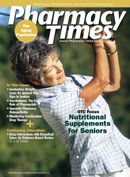Publication
Article
Pharmacy Times
A Pharmacy Technician's Role in Medication Error Prevention
Author(s):
Pharmacy technicians play a major role in helping prevent medication errors-our columnist presents strategies to foster communication and prevent errors from occurring.
Dr. Gaunt is a medication safety analyst and the editor of ISMP Medication Safety Alert! Community/Ambulatory Care Edition.
Pharmacy technicians play a major role in modern pharmacy practice. The pharmacist relies on the technician to provide an extra layer of safety. It is important for technicians to follow system-based processes and inform the pharmacist whenever they have questions, concerns, or feel processes do not work or are unmanageable.
Prescription Drop-Off
If technicians are stationed at prescription drop-off, consider creating a checklist of critical patient information that the technician should obtain from each patient. The date of birth should be written on every hard copy prescription so the pharmacist has a second identifier readily available during verification. Allergy and medical condition (eg, pregnancy) information should be updated in the patient’s profile at each patient encounter and communicated to the verification pharmacist. Knowing a patient’s medical conditions can help the pharmacist uncover errors.
Order Entry
Medication safety is enhanced when technicians know medical terminology and drug names, especially if they enter prescriptions. New drugs are a risk, because technicians, and pharmacists as well, may not be aware of them and may instead see and select something familiar. Pharmacists and technicians should work together to determine the best method of distributing information regarding new drugs on the market.
It is important that the technician understands the safety features of the computer system and does not create workarounds to improve efficiency at the risk of decreasing accuracy and safety. Drug alerts can be numerous, and the technician may be inclined to override an alert and not “bother” the pharmacist. All alerts that involve medication interactions, allergies, duplications, and other clinical warnings should be relayed to the pharmacist. Pharmacists should communicate unnecessary or superfluous alerts with corporate or commercial software designers and discuss the possibility of turning off those alerts.
Filling/Dispensing
Many mix-ups during this production phase occur due to incorrectly reading a label. The problem is aggravated by confirmation bias, whereby one selects based on what is familiar or expected on the label, rather than what is actually there. For example, a technician may choose a medication container based on a mental picture of the item, whether it is a characteristic of the drug label, the shape, size, or color of the container, or the location of the item on a shelf. Consequently, the wrong product may be picked. Physically separating drugs with look-alike labels and packaging can help reduce these types of errors. The use of bar code technology, viewing scanned images of products and prescriptions by pharmacists, and other technology for verification in the production process will help catch errors in this step.
Point of Sale
Errors may also occur with a correctly filled prescription if it is dispensed to a patient for whom it is not intended. This can be avoided by consistent use of a second identifier at the point of sale. The person picking up the prescription should be asked to provide the patient’s address or date of birth. The technician should then check this against the information on the prescription receipt and vial. Reviewing each medication with the patient or caregiver at the point of sale provides the best final check. Implement a process for technicians to refer dispensing of high-alert medications to pharmacists at the point of sale. Use notations on bags for patients that may be new, have had major changes in medications or dosages, and other established internal protocols to direct technicians to refer the patient to the pharmacist for counseling.
Internal errors should be discussed among pharmacists, technicians, and clerks. To foster proactive learning, it is important to share errors occurring at other pharmacies. This includes errors and prevention strategies reported nationally, such as those published in the ISMP Medication Safety Alert! Community/Ambulatory Care Edition. â–
Subscribe to Newsletter Pharmacy Times and the Institute for Safe Medication Practices (ISMP) would like to make community pharmacy practitioners aware of a publication that is available. The ISMP Medication Safety Alert! Community/ Ambulatory Care Edition is a monthly compilation of medicationrelated incidents, error-prevention rec- ommendations, news, and editorial content designed to inform and alert community pharmacy practitioners to potentially hazardous situations that may affect patient safety. Individual subscription prices are $52 per year for 12 monthly issues. Discounts are available for organizations with multiple pharmacy sites. This newsletter is delivered electronically. For more information, send an e'mail message to community@ismp. org, or contact ISMP at 215-947-7797.







